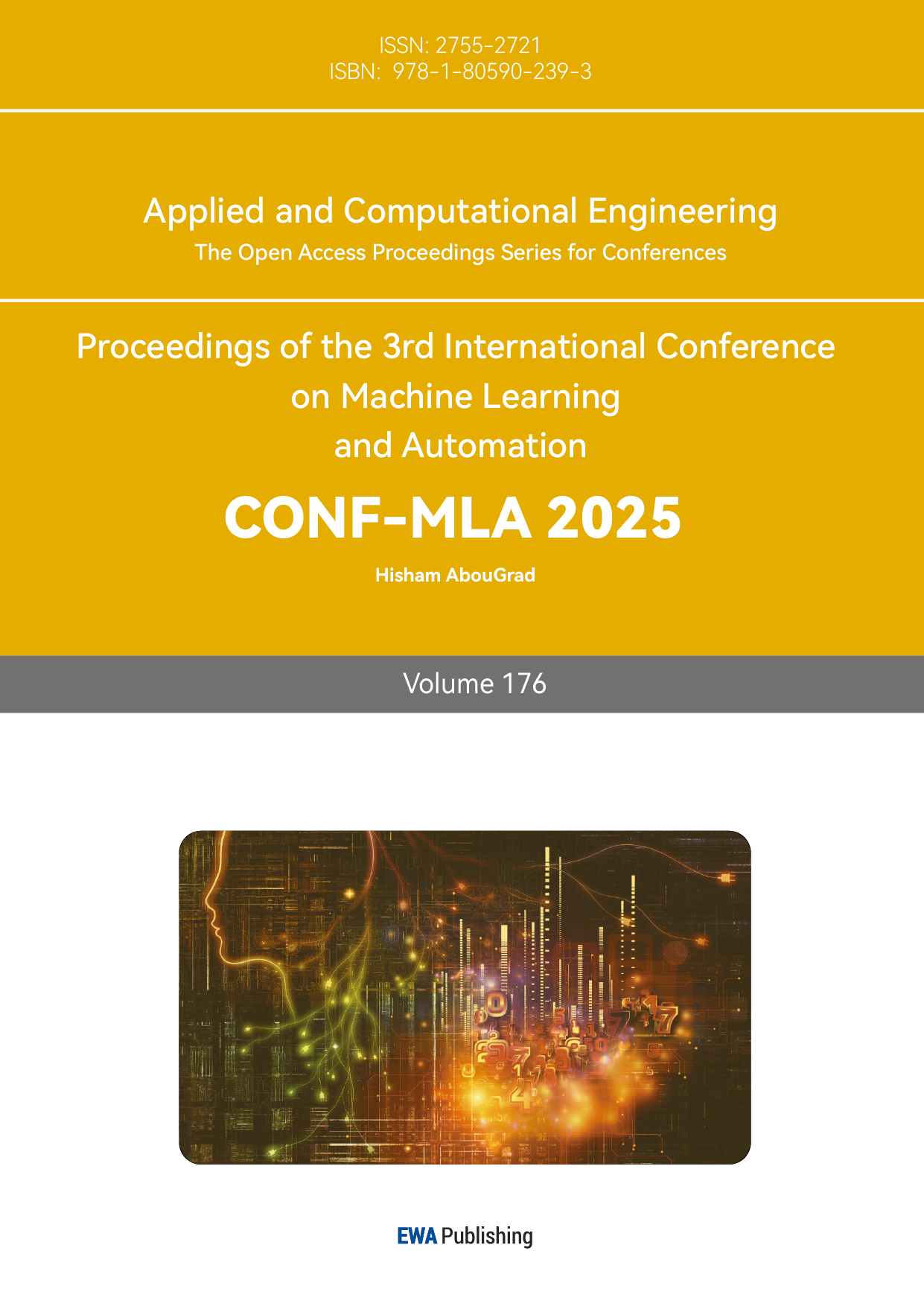References
[1]. Wei Liu et al. “SSD: Single Shot MultiBox Detector”. In: Computer Vision ECCV 2016. Springer International Publishing, 2016, pp. 21–37. isbn: 9783319464480. doi: 10.1007/978-3-319-46448-0_2. url: http: //dx.doi.org/10.1007/978-3-319-46448-0_2.
[2]. Alexey Dosovitskiy et al. An Image is Worth 16x16 Words: Transformers for Image Recognition at Scale. 2021. arXiv: 2010.11929 [cs.CV]. url: https: //arxiv.org/abs/2010.11929.
[3]. Ze Liu et al. Swin Transformer: Hierarchical Vision Transformer using Shifted Windows. 2021. arXiv: 2103.14030 [cs.CV]. url: https: //arxiv.org/abs/2103.14030.
[4]. Xinlei Chen and Abhinav Gupta. An Implementation of Faster RCNN with Study for Region Sampling. 2017. arXiv: 1702.02138 [cs.CV]. url: https: //arxiv.org/abs/1702.02138.
[5]. Kaiming He et al. Mask R-CNN. 2018. arXiv: 1703.06870 [cs.CV]. url: https: //arxiv.org/abs/1703.06870.
[6]. Joseph Redmon and Ali Farhadi. YOLOv3: An Incremental Improvement. 2018. arXiv: 1804.02767 [cs.CV]. url: https: //arxiv.org/abs/1804.02767.
[7]. Sergey Ioffe and Christian Szegedy. Batch Normalization: Accelerating Deep Network Training by Reducing Internal Covariate Shift. 2015. arXiv: 1502.03167 [cs.LG]. url: https: //arxiv.org/abs/1502.03167.
[8]. Joseph Redmon et al. You Only Look Once: Unified, Real-Time Object Detection. 2016. arXiv: 1506.02640 [cs.CV]. url: https: //arxiv.org/abs/1506.02640.
[9]. Joseph Redmon and Ali Farhadi. YOLO9000: Better, Faster, Stronger. 2016. arXiv: 1612.08242 [cs.CV]. url: https: //arxiv.org/abs/1612.08242.
[10]. Tsung-Yi Lin et al. Feature Pyramid Networks for Object Detection. 2017. arXiv: 1612.03144 [cs.CV]. url: https: //arxiv.org/abs/1612.03144.
[11]. Zheng Ge et al. YOLOX: Exceeding YOLO Series in 2021. 2021. arXiv: 2107.08430 [cs.CV]. url: https: //arxiv.org/abs/2107.08430.
[12]. Ao Wang et al. YOLOE: Real-Time Seeing Anything. 2025. arXiv: 2503. 07465 [cs.CV]. url: https: //arxiv.org/abs/2503.07465.
[13]. Sungbin Choi. “Fish Identification in Underwater Video with Deep Convolutional Neural Network: SNUMedinfo at LifeCLEF Fish task 2015”. In: Working Notes of CLEF 2015 Conference and Labs of the Evaluation forum, Toulouse, France, September 8-11, 2015. Ed. by Linda Cappellato et al. Vol. 1391. CEUR Workshop Proceedings. CEUR-WS.org, 2015. url: https: //ceur-ws.org/Vol-1391/110-CR.pdf.
[14]. David Zhang et al. “Unsupervised underwater fish detection fusing flow and objectiveness”. In: 2016 IEEE Winter Applications of Computer Vision Workshops (WACVW). Mar.2016, pp. 1–7. doi: 10.1109/WACVW.2016.7470121.
[15]. Xiu Li, Youhua Tang, and Tingwei Gao. “Deep but lightweight neural networks for fish detection”. In: OCEANS 2017 - Aberdeen. 2017, pp. 1–5. doi: 10.1109/OCEANSE.2017.8084961.
[16]. Abdullah Al Muksit et al. “YOLO-Fish: A robust fish detection model to detect fish in realistic underwater environment”. In: Ecological Informatics 72 (2022), p. 101847. issn: 1574-9541. doi: https: //doi.org/10.1016/j.ecoinf.2022.101847. url: https: //www.sciencedirect.com/science/article/pii/S1574954122002977.
[17]. Wei Long et al. “Triple Attention Mechanism with YOLOv5s for Fish Detection”. English. In: Fishes 9.5 (2024), p. 151.
[18]. Chaolong Xu and Zhibin Xie. “A lightweight underwater object detection with enhanced detail and edge-aware feature fusion”. English. In: Digital signal processing 167 (2025), p. 105456.
[19]. Lijia Guo et al. “Underwater object detection algorithm integrating image enhancement and deformable convolution Underwater object detection algorithm integrating image enhancement and deformable convolution”. English. In: Ecological informatics 89 (2025), p. 103185.
[20]. Dongcheng Liao et al. “Research on Underwater Target Detection Technology Based on SMV-YOLOv11n”. English. In: IEEE access 13 (2025), pp. 119820–119830.10
[21]. Shengfu Luo et al. “YOLO-DAFS: A Composite-Enhanced Underwater Object Detection Algorithm”. In: Journal of Marine Science and Engineering 13.5 (2025). issn: 2077-1312. doi: 10.3390/jmse13050947. url: https: //www.mdpi.com/2077-1312/13/5/947.
[22]. Rahima Khanam and Muhammad Hussain. “YOLOv11: An Overview of the Key Architectural Enhancements”. English. In: (2024).
[23]. Wei Lu et al. “A Robust Feature Downsampling Module for Remote Sensing Visual Tasks”. English. In: IEEE transactions on geoscience and remote sensing 61 (2023), pp. 1–1.
[24]. Guanglu Song, Yu Liu, and Xiaogang Wang. “Revisiting the Sibling Head in Object Detector”. English. In: IEEE, 2020, pp. 11560–11569.
[25]. Chuyi Li et al. YOLOv6: A Single-Stage Object Detection Framework for Industrial Applications. 2022. arXiv: 2209.02976 [cs.CV]. url: https: //arxiv.org/abs/2209.02976.
[26]. Alzayat Saleh et al. “A realistic fish-habitat dataset to evaluate algorithms for underwater visual analysis”. English. In: Scientific reports 10.1 (2020), p. 14671.
[27]. Ellen M. Ditria et al. “Annotated Video Footage for Automated Identification and Counting of Fish in Unconstrained Seagrass Habitats”. English. In: Frontiers in Marine Science8 (2021).
[28]. Fenglei Han et al. “Marine Organism Detection and Classification from Underwater Vision Based on the Deep CNN Method”. In: Mathematical Problems in Engineering 2020.1 (2020), p. 3937580. doi: https: //doi.org/10.1155/2020/3937580. eprint: https: //onlinelibrary.wiley.com/doi/pdf/10.1155/2020/3937580. url: https: //onlinelibrary.wiley.com/doi/abs/10.1155/2020/3937580.



